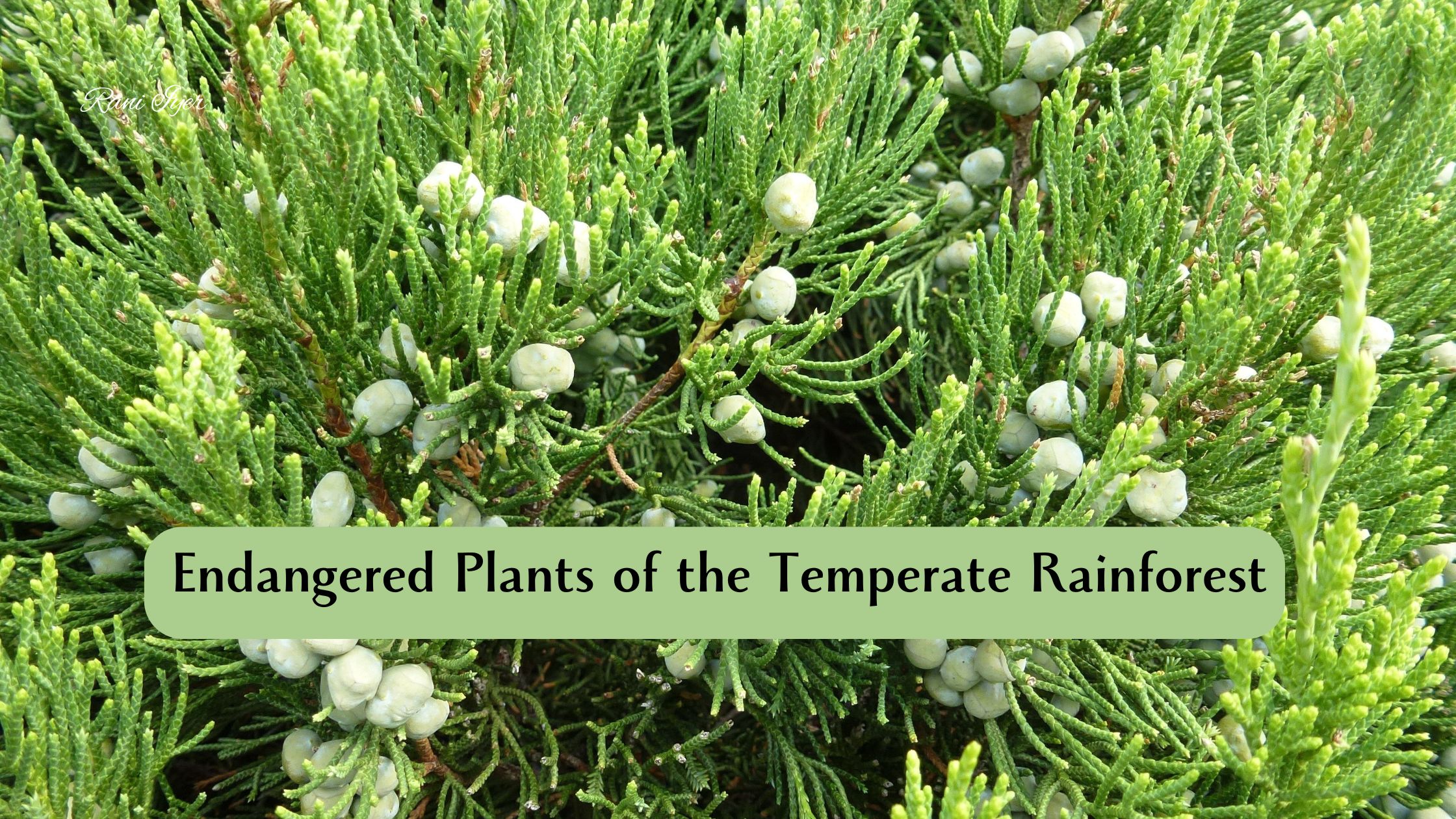Beneath the lush canopy of temperate rainforests lies a world brimming with life—yet some of its most extraordinary inhabitants are silently vanishing. From towering trees to delicate ferns, these endangered plants form the backbone of an ecosystem rich in biodiversity. However, their fight for survival is becoming increasingly dire as habitat loss and climate change threaten their existence. In this article, we invite you to embark on a journey through the hidden treasures of the temperate rainforest, where each plant tells a story of resilience and vulnerability. Discover the unique adaptations that allow these species to thrive in such a delicate environment and learn how conservation efforts aim to protect these floral wonders from the brink. As we delve into the intricacies of these endangered plants, you’ll uncover not only their significance within the ecosystem but also the urgent need for collective action to ensure their survival for generations to come.
Importance of Biodiversity in Temperate Rainforests
Biodiversity is the cornerstone of any healthy ecosystem, and temperate rainforests are no exception. These verdant landscapes, often shrouded in mist and mystery, are home to an astonishing array of plant species that coexist in a delicate balance. From the towering canopies of ancient trees to the lush undergrowth of ferns and mosses, each plant plays a critical role in maintaining the ecological equilibrium. The rich biodiversity of temperate rainforests ensures the stability and resilience of these ecosystems, enabling them to provide essential services such as carbon sequestration, water filtration, and soil preservation.
Moreover, the interdependence of plant species in temperate rainforests supports a complex web of life, including countless animal species, fungi, and microorganisms. This intricate network creates a dynamic environment where nutrient cycling and energy flow are maintained through the cooperative interactions of all living organisms. For instance, plants provide food and habitat for herbivores, which in turn support predators and decomposers, thereby perpetuating the cycle of life. Biodiversity also enhances the adaptive capacity of rainforests, allowing them to withstand and recover from disturbances such as storms, diseases, and human activities.
The importance of biodiversity in temperate rainforests extends beyond ecological functions to encompass cultural, scientific, and economic values. These forests have long been a source of inspiration and spiritual significance for indigenous communities, who possess invaluable traditional knowledge about the flora and fauna. Additionally, temperate rainforests hold untapped potential for scientific discoveries, including novel compounds for pharmaceuticals and insights into evolutionary processes. Economically, sustainable harvesting of forest products, eco-tourism, and climate regulation services provided by these biodiverse ecosystems contribute to local and global well-being.

Overview of Endangered Plant Species
Despite their resilience, temperate rainforests are home to numerous plant species that face the imminent threat of extinction. These endangered plants vary widely in form and function, from the majestic Western Red Cedar (Thuja plicata) to the delicate Lady’s Slipper Orchid (Cypripedium calceolus). Each endangered species represents a unique component of the rainforest’s biodiversity, with specific ecological roles and evolutionary histories. The loss of any one species can have cascading effects on the entire ecosystem, underscoring the urgency of conservation efforts.
Endangered plants of temperate rainforests often possess specialized adaptations that allow them to thrive in specific microhabitats. For example, the Pacific Yew (Taxus brevifolia) is a slow-growing tree that inhabits the understory, where it benefits from the shade and moisture provided by the forest canopy. This species is not only ecologically significant but also of medical importance, as its bark contains compounds used to produce the anti-cancer drug paclitaxel. Similarly, the Northern Spotted Owl’s (Strix occidentalis caurina) preferred nesting sites are in old-growth forests, which are also the habitat of the endangered Marbled Murrelet (Brachyramphus marmoratus), a seabird that relies on large moss-covered branches for nesting.
Understanding the diversity and characteristics of endangered plant species in temperate rainforests is crucial for developing effective conservation strategies. These plants often exhibit remarkable resilience and adaptability, yet their survival is increasingly jeopardized by anthropogenic pressures. Efforts to catalog and monitor endangered species, coupled with habitat protection and restoration initiatives, are essential for safeguarding these botanical treasures. By appreciating the unique qualities and ecological significance of endangered plants, we can better advocate for their preservation and the overall health of temperate rainforests.
Factors Contributing to Endangerment
The endangerment of plant species in temperate rainforests is driven by a multitude of interconnected factors, primarily stemming from human activities. Deforestation, habitat fragmentation, and land-use changes are among the most significant threats. Logging operations, agricultural expansion, and urban development lead to the destruction and degradation of critical habitats, leaving plant species with limited space to grow and reproduce. The loss of old-growth forests, in particular, is devastating for species that rely on these ancient ecosystems for their survival.
Invasive species pose another serious threat to the native flora of temperate rainforests. Non-native plants and animals can outcompete, predate, or disrupt the reproductive processes of indigenous species, leading to declines in population numbers. For example, the introduction of Himalayan blackberry (Rubus armeniacus) in North American temperate rainforests has resulted in aggressive competition with native plants, altering habitat structures and nutrient cycles. Additionally, diseases and pests, often exacerbated by climate change, can spread rapidly and devastate vulnerable plant populations that lack natural defenses.
Climate change itself is a pervasive and escalating threat to the temperate rainforest flora. Rising temperatures, altered precipitation patterns, and increased frequency of extreme weather events disrupt the finely tuned environmental conditions that many plant species depend on. Shifts in climate zones can lead to mismatches between plants and their pollinators, affect seed germination and growth, and increase vulnerability to droughts and wildfires. The compounded effect of these stressors accelerates the decline of endangered plant species, pushing them closer to extinction.
Unique Adaptations of Endangered Plants
The endangered plants of temperate rainforests have evolved a fascinating array of adaptations to survive in their unique environments. These adaptations not only highlight the intricate relationships between species and their habitats but also underscore the remarkable resilience of these plants. One notable adaptation is the ability of many rainforest plants to thrive in low-light conditions. Species such as the Western Hemlock (Tsuga heterophylla) have developed shade tolerance, allowing them to grow beneath the dense canopy of larger trees. This adaptation enables them to exploit niches that are less accessible to sun-loving species.
Another fascinating adaptation is the symbiotic relationship between certain plants and fungi. Mycorrhizal associations, where fungi colonize plant roots, are critical for nutrient uptake in nutrient-poor forest soils. For example, the endangered Western Underground Orchid (Rhizanthella gardneri) relies entirely on mycorrhizal fungi for its nutrition, as it lacks chlorophyll and cannot photosynthesize. This mutualistic relationship enhances the plant’s ability to absorb water and essential nutrients, demonstrating the complex interdependencies within temperate rainforest ecosystems.
Some endangered plants have evolved specialized reproductive strategies to increase their chances of survival. The Ghost Orchid (Dendrophylax lindenii), for instance, employs a unique pollination mechanism involving specific moth species that are attracted to its fragrant flowers. This highly specialized relationship ensures effective pollination, although it also makes the plant vulnerable if its pollinators decline. Similarly, the seed dispersal mechanisms of certain plants, such as the explosive dehiscence of the Touch-me-not (Impatiens capensis), enable them to spread their seeds over a wide area, enhancing their prospects for colonization and growth.

Conservation Efforts and Strategies
Conserving the endangered plants of temperate rainforests requires a multifaceted approach that addresses the various threats they face. One of the primary strategies is the establishment and management of protected areas. National parks, nature reserves, and conservation easements provide safe havens where endangered plants can thrive without the immediate pressures of habitat destruction and human disturbance. Effective management of these protected areas involves monitoring plant populations, controlling invasive species, and restoring degraded habitats to ensure the long-term survival of native flora.
Ex-situ conservation efforts complement in-situ strategies by preserving plant genetic material outside their natural habitats. Botanical gardens, seed banks, and tissue culture facilities play a crucial role in safeguarding the genetic diversity of endangered plants. These institutions not only serve as repositories for plant material but also conduct research on propagation techniques, disease resistance, and climate adaptability. By maintaining living collections and seed banks, ex-situ conservation efforts provide a safety net against the loss of plant species in the wild and support reintroduction and habitat restoration initiatives.
Community engagement and education are vital components of successful conservation strategies. Raising awareness about the importance of endangered plants and the threats they face can inspire collective action and foster a sense of stewardship among local communities. Educational programs, citizen science projects, and collaborative conservation initiatives empower individuals to contribute to the protection of temperate rainforests. Involving indigenous communities, who possess traditional ecological knowledge and a deep connection to the land, can enhance the effectiveness of conservation efforts and promote culturally sensitive approaches to biodiversity preservation.
Role of Indigenous Communities in Plant Conservation
Indigenous communities have a profound connection to temperate rainforests, with their livelihoods, cultures, and traditions intricately linked to the land and its biodiversity. These communities possess invaluable traditional ecological knowledge that has been passed down through generations, encompassing a deep understanding of local plant species, their uses, and their ecological roles. Indigenous knowledge systems offer insights into sustainable resource management practices that have supported the conservation of rainforest ecosystems for millennia.
The involvement of indigenous communities in plant conservation efforts is increasingly recognized as essential for the success of these initiatives. Collaborative management approaches that integrate traditional knowledge with scientific research can enhance conservation outcomes. For instance, indigenous-led conservation projects often emphasize holistic and ecosystem-based strategies that consider the interconnectedness of all living organisms. These approaches can be particularly effective in addressing complex challenges such as habitat restoration, invasive species control, and climate change adaptation.
Empowering indigenous communities to take a leading role in conservation efforts also promotes social and environmental justice. Recognizing and respecting the rights of indigenous peoples to their ancestral lands, and supporting their efforts to protect and manage these territories, can lead to more equitable and sustainable conservation outcomes. Indigenous stewardship of temperate rainforests not only safeguards endangered plant species but also strengthens the cultural heritage and resilience of these communities. By fostering partnerships with indigenous peoples, conservation organizations and policymakers can create more inclusive and effective strategies for preserving the rich biodiversity of temperate rainforests.
How Climate Change Affects Temperate Rainforest Flora
Climate change is one of the most pressing threats to the flora of temperate rainforests, with wide-ranging impacts that disrupt the delicate balance of these ecosystems. Rising temperatures and altered precipitation patterns are among the most immediate consequences, leading to shifts in the distribution and abundance of plant species. Many temperate rainforest plants are adapted to specific climatic conditions, and even slight changes in temperature and moisture can affect their growth, reproduction, and survival.
One of the significant impacts of climate change on temperate rainforest flora is the alteration of phenological events, such as flowering, fruiting, and leaf-out times. These changes can lead to mismatches between plants and their pollinators or seed dispersers, disrupting mutualistic relationships that are critical for plant reproduction. For example, if a plant species flowers earlier in response to warmer temperatures, but its pollinators do not adjust their life cycles accordingly, the plant may experience reduced pollination success and lower seed production.
Additionally, climate change exacerbates the frequency and intensity of extreme weather events, such as storms, droughts, and wildfires, which can have devastating effects on temperate rainforest flora. Drought stress can weaken plants, making them more susceptible to diseases and pests, while intense storms can cause physical damage and uproot trees. Wildfires, which are becoming more common in some temperate rainforest regions, can lead to the loss of critical habitat for endangered plant species. The cumulative impact of these stressors can result in significant declines in plant populations, further threatening the biodiversity of temperate rainforests.
Ways to Support Endangered Plant Species
Supporting the conservation of endangered plant species in temperate rainforests requires collective action at multiple levels, from individual efforts to global initiatives. One of the most effective ways to contribute is by supporting organizations and projects dedicated to the preservation of these ecosystems. Donations to conservation groups, participation in volunteer programs, and advocacy for policy changes can make a significant difference in protecting endangered plants and their habitats.
Individuals can also make a positive impact by adopting sustainable practices in their daily lives. Reducing carbon footprints, minimizing the use of single-use plastics, and supporting sustainable products can help mitigate the environmental pressures that threaten temperate rainforests. Additionally, promoting and participating in responsible ecotourism can raise awareness about the importance of these ecosystems and generate funding for conservation efforts.
Education and community engagement are crucial for fostering a culture of conservation. By learning about the unique plants of temperate rainforests and the challenges they face, individuals can become informed advocates for their protection. Schools, universities, and community organizations can incorporate conservation education into their programs, inspiring the next generation of environmental stewards. Citizen science initiatives, where members of the public contribute to scientific research and monitoring efforts, can also play a vital role in gathering data and raising awareness about endangered plant species.
Conclusion: The Future of Temperate Rainforest Plants
The temperate rainforests of the world are precious repositories of biodiversity, home to countless plant species that are integral to the health and resilience of these ecosystems. However, the survival of many of these plants is increasingly precarious in the face of habitat loss, climate change, and other anthropogenic pressures. The fight for the survival of endangered plants in temperate rainforests is a call to action for all of us to recognize the intrinsic value of these botanical treasures and the critical roles they play within their ecosystems.
Conservation efforts that integrate scientific research, traditional ecological knowledge, and community engagement offer hope for the future of temperate rainforest plants. By protecting and restoring habitats, supporting sustainable practices, and fostering a deeper understanding of the importance of biodiversity, we can contribute to the preservation of these remarkable ecosystems. The resilience and adaptability of temperate rainforest plants remind us of the power of nature to recover and thrive when given the opportunity.
The future of temperate rainforest plants depends on our collective commitment to conservation and sustainability. By working together, we can ensure that these hidden treasures continue to enrich our planet with their beauty, diversity, and ecological significance. The journey to protect the endangered plants of temperate rainforests is not just about preserving individual species; it is about safeguarding the intricate web of life that sustains us all. Let us take action now to ensure that these botanical wonders endure for generations to come.

